The Gift of South Dakota
Subscriptions to South Dakota Magazine make great gifts!
Subscribe today — 1 year (6 issues) is just $29!
Galena’s Ghosts
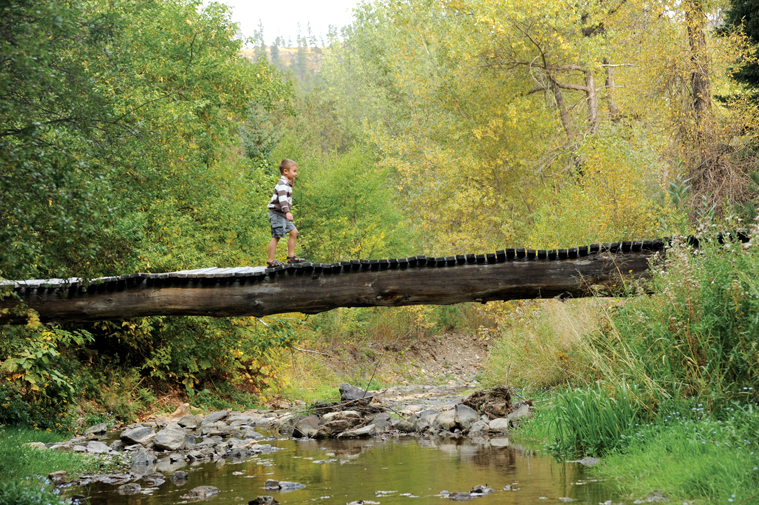 |
| An old footbridge crosses Bear Butte Creek in Galena. |
Galena, high in the Black Hills eight miles east of Deadwood, is a state treasure.
Nothing in the American West has been romanticized quite like ghost towns. But in the 21st century many of those places have deteriorated to the point that it’s hard to get a feel for the community that once thrived there. So an authentic ghost town that retains a sense of itself, as Galena does, stands out as a gem. In fact, there may be no ghost town experience in the West that tops Galena’s the second Saturday of each June. That’s when Galena is put on display with food, bluegrass music, and a long self-guided hike to historic structures—some still standing, some memorialized with markers and historic photos.
If Galena ranks as a top-drawer ghost town, thanks goes to volunteers associated with the Galena Historical Society. The pretty alpine setting works to Galena’s benefit, too. Instead of tumbleweeds rolling through this ghost town, Bear Butte Creek babbles its way down the gulch. Credit goes also to the quality of ghosts here. They include prospectors, saloon keepers (lots of those), merchants, school marms, South Dakota’s most famous coyote, a member of George Custer’s gold-finding expedition to the Black Hills, shady speculators, and at least one bloodthirsty gunslinger. Thrown together in this gulch, these real life characters played out a Western drama Louis L’Amour couldn’t top.
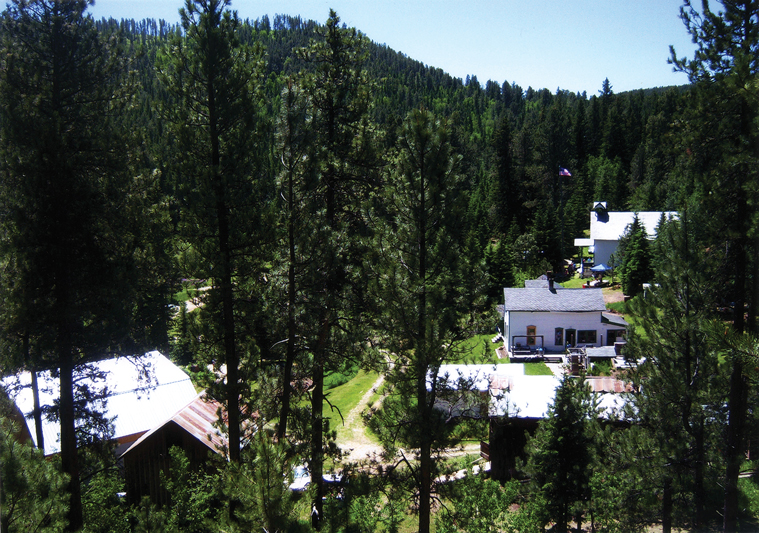 |
| Galena is a quiet village surrounded by forest about eight miles east of Deadwood. |
In blatant violation of the federal treaty with the Lakota people, gold seekers panned for flashes of color along Bear Butte Creek in 1875 and ’76. Gold quantities were a bit disappointing. But astute prospectors recognized lead sulfide deposits, called galena, in the hillsides rising above the creek. That obviously meant lead and also, quite likely, silver. While other Black Hills towns sprang to life with visions of gold mines, Galena banked on silver. Most everyone in the Hills recognized the names of Galena’s silver mines: Sitting Bull, Richmond, Florence, Merrit No. 1, Merrit No. 2, General Cook, Alex, Chub, Cora, Emma, El Refugio, Moll, Double Rainbow, and others.
None of them made great profits but by no means were they fly-by-night operations. Many won backing from major East Coast venture capitalists, but a big portion of that money ended up in the pockets of lawyers. Galena silver mines took form immediately adjacent to one another, and sometimes on top of one another. Claims were in constant legal dispute. John McClintock, early Black Hills entrepreneur and historian, wrote that a national drop in silver value combined with “prolonged litigation by mine claimants” dashed many Galena hopes.
Still, in 1878, it appeared Galena had perhaps found a counterpart of Lead’s George Hearst, who spared no expense in developing Homestake Mine so that it became the Western Hemisphere’s biggest gold producer. Into Galena rode wealthy Colonel J. S. Davey. He first leased, and then bought, the Sitting Bull and built a great mine mill. However, Davey quickly fell into a legal dispute with the neighboring Richmond Mine operators. Richmond owners believed Sitting Bull miners, deep underground, were tunneling into their claim. Davey spent lots of money defending himself, lost, and faced even uglier charges before the first case was decided. By some accounts one Jack Gorman was connected to the Richmond Mine, but John McClintock believed Gorman owned another claim that Davey hoped to buy.
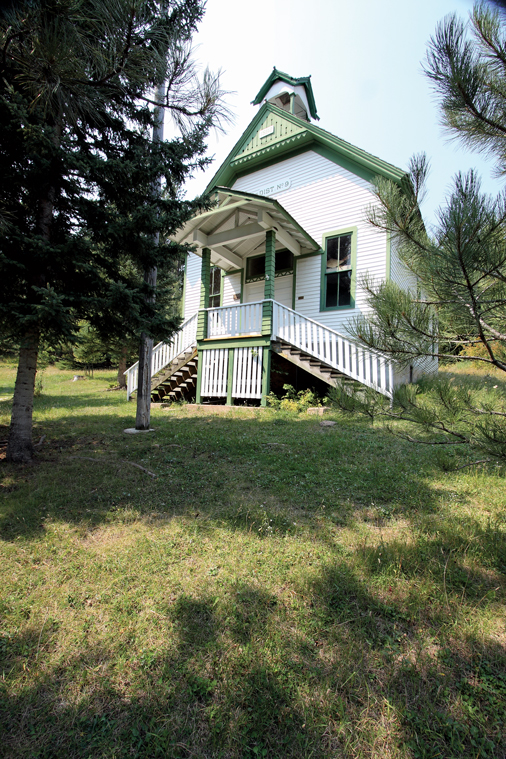 |
| When Galena's century-old schoolhouse faced demolition in 1983, townspeople raised funds for restoration. |
Recalling what happened next, McClintock observed, “On more than one occasion, in the Black Hills, it was proven that a sure way to get a mining claim was to first ‘get’ the owner.”
Davey had a guard on his payroll named Billy Thacker, whom McClintock described as “anxious to gain notoriety as a dangerous two-gun man and killer.” He got his chance one day when Gorman stepped out of the Galena post office. Thacker verbally insulted Gorman, who replied with an angry remark and shook his fist. That prompted Thacker to draw, fire, and send Gorman to his grave.
Now Colonel Davey had another costly court case on his hands as he defended his employee. The jury, in curious reasoning not entirely uncommon in Black Hills towns of the era, decided Thacker acted in self-defense when Gorman shook his fist. But the victory further depleted Davey’s wealth, and destroyed his reputation. He eventually left town. Billy Thacker left sooner, certainly knowing he was lucky in having been spared the noose.
As all this unfolded, Galena grew into a full-fledged community with general and grocery stores, barbershop, assay office, blacksmith shop, sawmills, boarding houses and livery stables. Some Northern Hills residents took pride in knowing the names and character of all of Galena’s saloons: Sudden Death, Mint, Irish World, Dempsey’s, Cavanaugh’s and Scandalous Bill’s, to name only a few.
W.V. Doyle built the schoolhouse in 1882 and it served students until World War II. A Catholic church and a Methodist church were built, although there’s some doubt about whether any Methodist services were conducted. By some accounts the minister made off with church funds, leaving the would-be congregation to cover the building’s costs by using it as a dance and social hall.
Galena’s early mines faded away only to be replaced by late 19th century and early 20th century mining operations that embraced new milling technologies. These included the Union Hill, Gilt Edge, and Branch Mint mines, and in 1902 the Deadwood Central Railroad built a spur line to Galena. The Deadwood Pioneer Times newspaper reported that “ore shipments from the district are growing every day, and the road will soon have all it can do to handle them.”
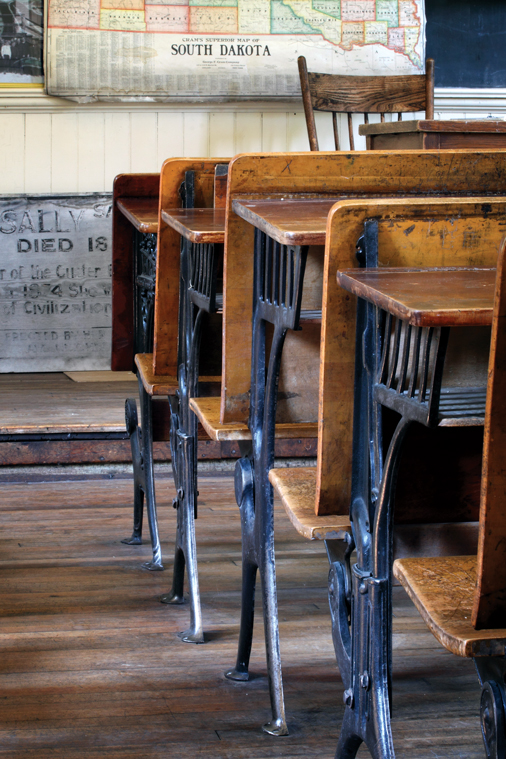 |
| Today the school is the starting point for Galena's annual history hike, a fundraiser to further preserve the old mining town. |
Within 10 years, though, the new mines were gone or fading fast. Galena’s population had peaked at about 800 just before 1900, but now it quickly dwindled. In the 1920s Black Hills journalist and historian Richard Hughes reported that “Galena is nothing more than a post office.”
Not quite. Galena remained a naturally beautiful spot, always cool when summer heat scorched the prairies below, and there were folks who liked it best after the mines, saloons, and stamp mills ceased their racket.
Some of the wood frame buildings fell into disrepair and the lumber was hauled away. Other structures were put to new uses. The Borsch Boarding House, for example, had catered to miners but changed to become the Borsch Resort, serving visitors seeking quiet respite in the Hills. There are still people in the region who recall Sunday drives to Galena, decades ago, for the resort’s famous chicken dinners.
In 1947 Galena’s most famous resident appeared on the scene—an icon in the true sense of the word. Tootsie, an orphaned coyote, was adopted by Fred and Esther Borsch. Fred taught Tootsie how to howl along to songs, howl greetings and goodbyes to humans, and how to behave in parades and other celebrations. Photographers and artists couldn’t get enough of Tootsie. In 1949 Governor George T. Mickelson made her South Dakota’s official animal and mascot. She toured other states as a South Dakota ambassador. Like South Dakota itself, Tootsie was colorful and not entirely tame.
“She tolerated me being around her, but I couldn’t pet her,” recalls Marilyn Schwaner, a young relative to Fred and Esther during the Tootsie years. “That was my dream, to pet her, but I never did until she had surgery for cancer and was groggy as she came out of it.”
Tootsie died in 1959 but her likenesses are still with us regularly, including sketches in this magazine’s pages over the years.
Marilyn spent much of her teen years attending school in Ohio, but always came to Galena for summers with her grandmother. “There’s something mystical about the Black Hills,” she says. “They draw you back.” Marilyn used to cry when she saw the Black Hills appear on the horizon as she traveled west after the school year, and she cried again when she left them in late summer. Now, happily, she lives at Galena in the house where her grandmother resided, and she commutes into Deadwood to work as a med tech at the hospital. It’s a job that keeps her busy, but she finds time to play active roles in the Galena Historical Society. Marilyn was, in fact, part of the group when it first got together in 1983 to save the 101-year-old schoolhouse. The Deadwood-Lead board of education had decided to tear the school down, but then worked with the historical group as it first raised dollars with bake sales in front of Deadwood’s Ben Franklin Store.
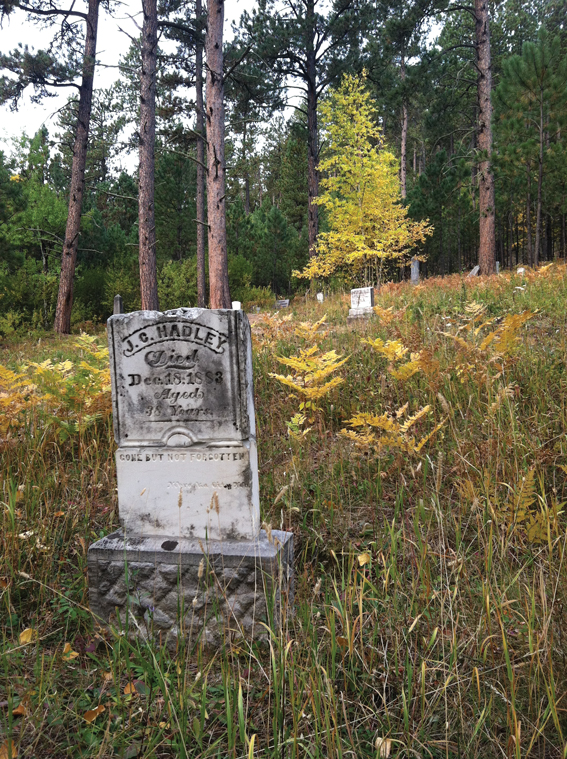 |
| Galena's cemetery, on Vinegar Hill, is the final resting place for Civil War veterans, a member of George Custer's 1874 Black Hills Expedition and miners. Volunteers are re-marking many of the cemetery's earliest gravesites. |
Bake sale fundraising evolved into the annual history hike. “You can get a little exercise and learn some history,” advises Marilyn. You can also rest assured the dollars you spend on brats and beans will support good historical preservation.
Participants do, indeed, get exercise. The basic hike runs 3.65 miles and there’s climbing involved, up to hillside buildings and the Galena cemetery on Vinegar Hill. The route includes the school where storytellers engage listeners, the assay office, and Sammy Moll’s diggings. A climb up an abandoned railroad bed brings the Methodist steeple into view (the steeple is all that remains of the church). Then it’s on to the Catholic church, saloon sites, livery stable and Tootsie’s home. The cemetery is a fascinating stop because of ongoing work to determine who is buried where. Many of the original grave markers were wood and rotted away. Mark and Suzanne Luken have volunteered their expertise and long hours to make certain the graves of a dozen Civil War veterans are properly marked, and their lives interpreted. The Lukens also took the lead in re-marking Sarah Campbell’s grave here. She worked as a cook for Custer’s transformational 1874 expedition, was drawn back to the Black Hills, cooked for Galena area miners and died in 1888.
If 3.65 miles isn’t quite enough to quench a hiker’s thirst for history, there’s an optional 1.6-mile add-on to consider. It’s a somewhat rugged climb to the Hercules Walls. Hercules was to be the name of a mighty mine mill, and its stone foundation was skillfully completed before financing dried up. The Hercules never went into operation but its foundation walls attest to remarkable stone craftsmanship often found in Western mining regions.
It takes about 25 volunteers, some of them working very hard three days in advance, to stage Galena’s history celebration. They mark trails, set up interpretive signs and photos, prepare and serve food, tell stories, park cars, and haul trash. If the weather is good maybe 700 people will show up.
Then, after the last car rumbles away toward Highway 385, the deep quiet of the high Hills settles in. Along with fewer than 20 living friends who call Galena home year round, the ghosts have the place to themselves again.
Editor’s Note: This story is revised from the May/June 2013 issue of South Dakota Magazine. To order a copy or to subscribe, call (800) 456-5117.







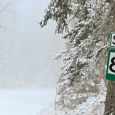


Comments
I have a small rocking chair with Galena stamped on the bottom of the seat .
Rochelle